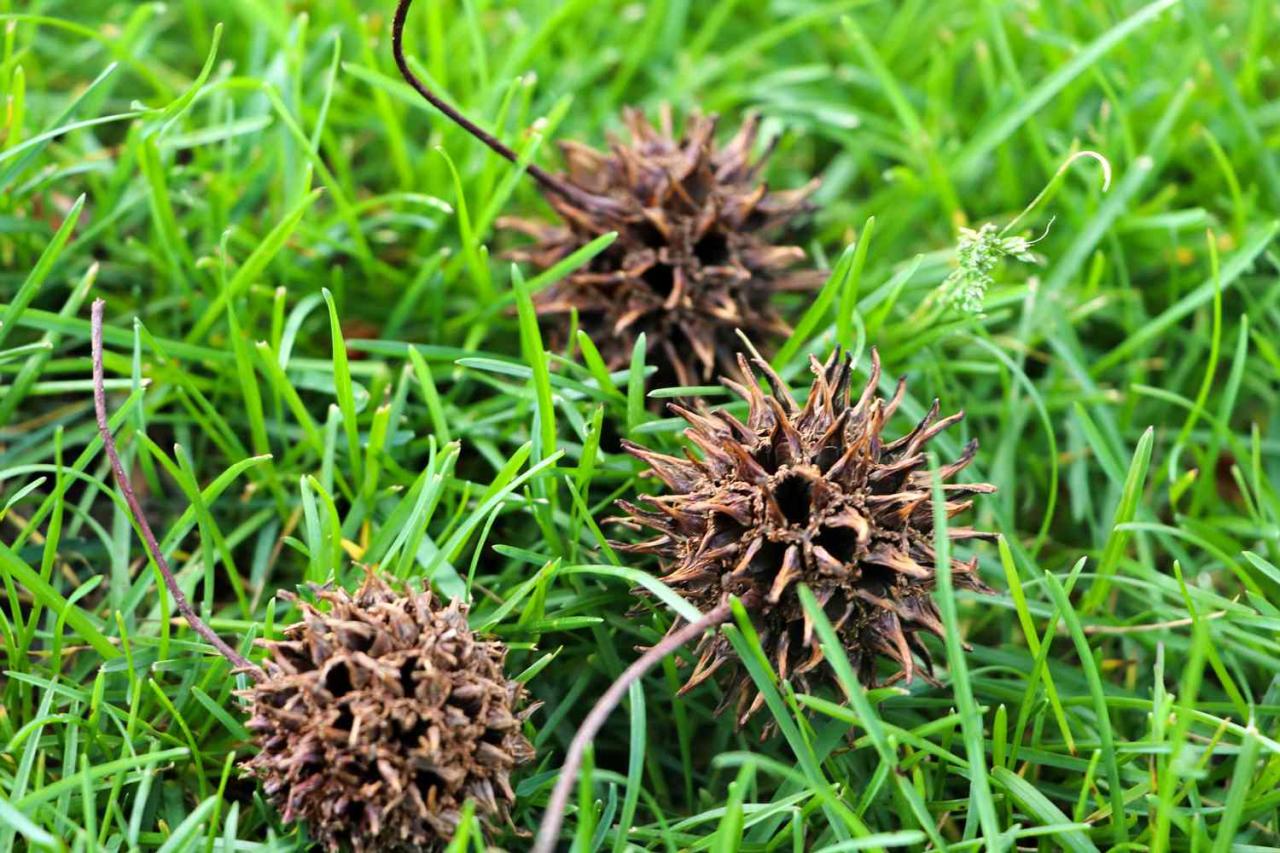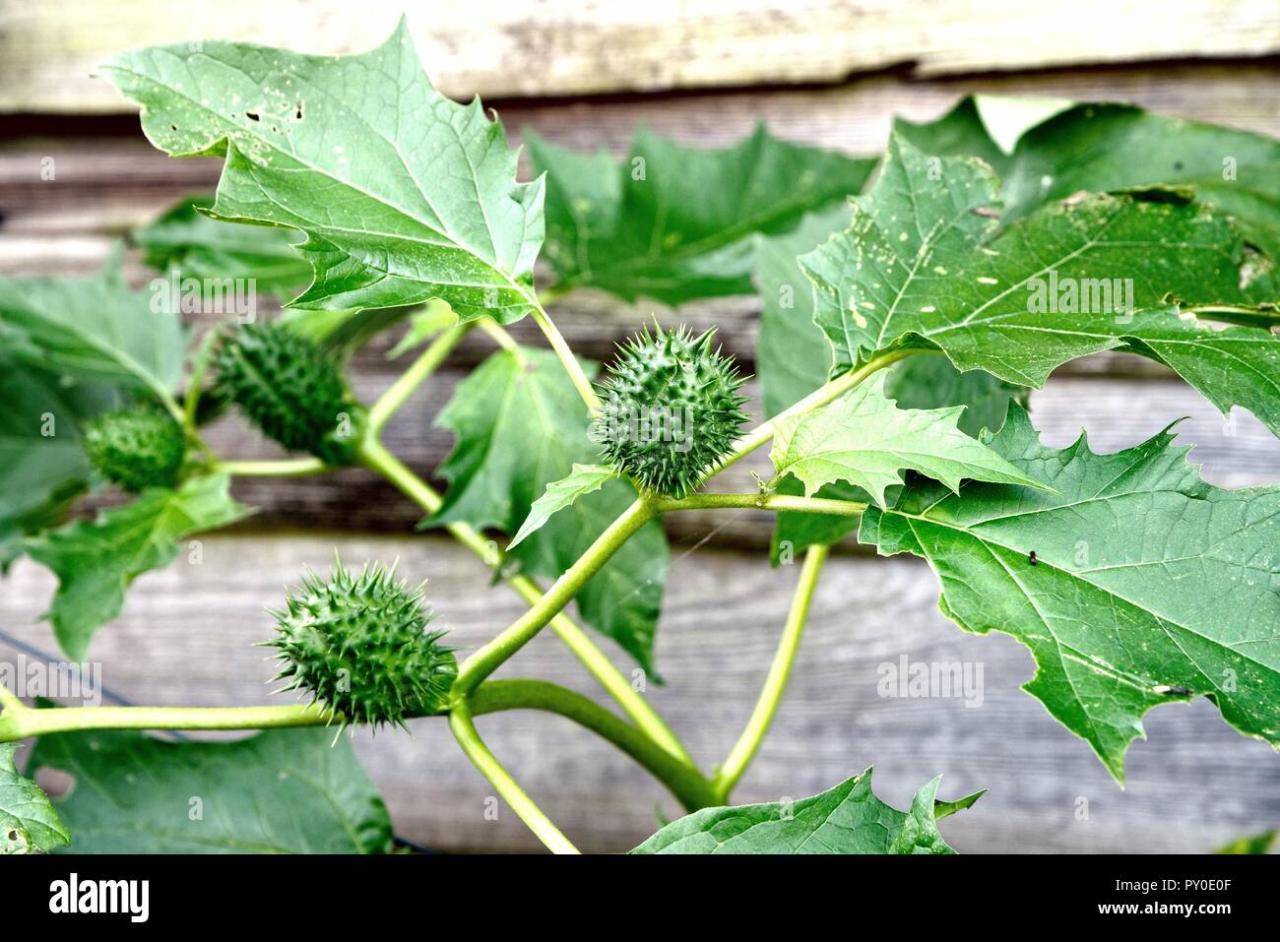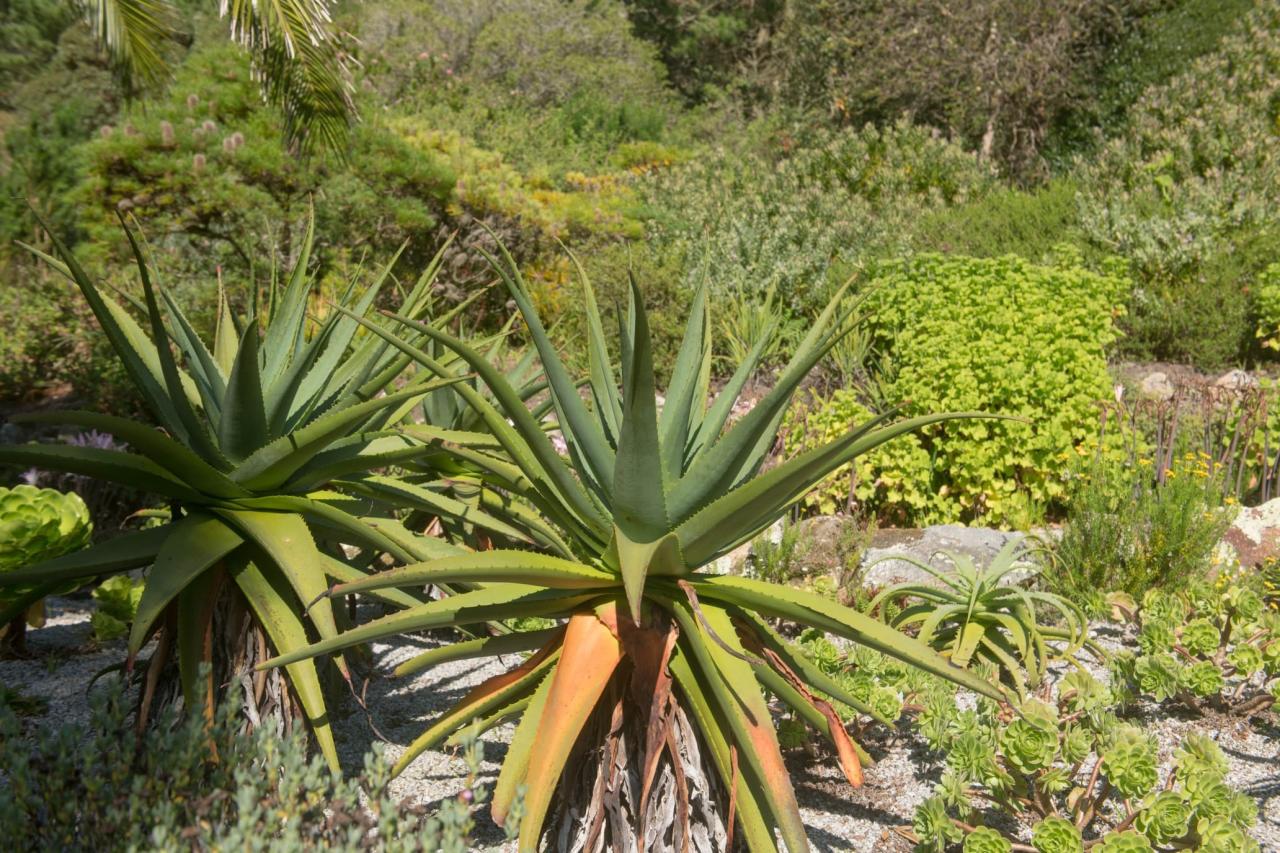The Secret to Planting Spiky Seeds Without Getting Hurt lies in understanding the unique challenges these seeds present and employing the right techniques and protective measures. From prickly cacti to spiky sunflowers, these seeds can cause painful injuries if handled carelessly.
This guide delves into the intricacies of planting spiky seeds, offering practical advice and safety tips to ensure a smooth and injury-free experience.
Spiky seeds, while beautiful and diverse, can pose a significant threat to gardeners, especially beginners. From the sharp spines of cacti to the prickly burrs of thistles, these seeds are not only difficult to handle but can also cause painful injuries.
This article provides a comprehensive guide on how to safely plant spiky seeds, covering everything from choosing the right tools to employing effective protective measures.
Understanding Spiky Seeds

Many plants produce seeds with protective coverings, often called seed coats. These seed coats can range from smooth and soft to hard and spiky, serving to protect the seed from damage and predation. While these spiky seeds are often fascinating, they can also pose a risk to those handling them.
Types of Spiky Seeds
Spiky seeds are found in a variety of plants, and their characteristics can vary significantly. Some common examples include:
- Poppy seeds:These small, black seeds have a rough, slightly spiky texture. While not particularly sharp, they can be irritating to the skin if handled in large quantities.
- Sunflower seeds:Although often consumed as snacks, sunflower seeds have a hard, rough outer shell that can be quite sharp, especially when broken open.
- Prickly poppy seeds:These seeds are larger than poppy seeds and have a distinctly spiky exterior. They are known for their ability to irritate the skin and cause discomfort.
- Acorn seeds:The outer shell of acorns is tough and often has a spiky texture. While not as sharp as some other spiky seeds, they can still cause minor skin abrasions.
Potential Hazards of Handling Spiky Seeds
Spiky seeds pose various hazards to those who handle them, including:
- Skin irritation:The sharp points of spiky seeds can irritate the skin, causing redness, itching, and even small cuts or punctures.
- Eye irritation:Spiky seeds can also irritate the eyes, potentially causing scratches or even temporary vision loss. If a spiky seed gets in the eye, it is essential to seek medical attention immediately.
- Allergic reactions:Some individuals may experience allergic reactions to the proteins found in certain spiky seeds. These reactions can range from mild skin rashes to severe breathing difficulties.
Safety Tips for Handling Spiky Seeds
To minimize the risks associated with handling spiky seeds, it is crucial to follow these safety tips:
- Wear protective gear:Always wear gloves when handling spiky seeds. Leather or thick rubber gloves are recommended to provide adequate protection against punctures and irritation.
- Use appropriate tools:Use tools such as tweezers or forceps to handle individual spiky seeds, avoiding direct contact with bare hands.
- Wash hands thoroughly:After handling spiky seeds, wash your hands thoroughly with soap and water to remove any residue that could cause irritation.
- Avoid contact with eyes:Wear safety glasses or goggles to protect your eyes from spiky seeds. If a seed gets in your eye, flush it immediately with clean water and seek medical attention.
- Store seeds properly:Store spiky seeds in sealed containers to prevent accidental contact and keep them away from children and pets.
Planting Techniques for Spiky Seeds

Planting spiky seeds can be a challenge, but with the right techniques, you can do it safely and effectively. This section will guide you through the process of planting spiky seeds, minimizing the risk of injury while maximizing your chances of successful germination.
Choosing the Right Planting Medium
The planting medium you choose can significantly impact the success of your spiky seeds. The ideal medium should be well-draining to prevent waterlogging, which can lead to root rot. It should also provide adequate aeration and moisture retention. Here are some common options:
- Potting mix:A well-balanced potting mix, specifically formulated for seed starting, is a good choice for most spiky seeds. It typically contains a blend of peat moss, vermiculite, and perlite, providing excellent drainage and moisture retention.
- Coco coir:A sustainable and eco-friendly option, coco coir is made from the fibers of coconut husks. It offers good drainage and aeration, making it suitable for spiky seeds.
- Seed starting mix:This type of mix is designed for starting seeds indoors and is often formulated with a higher percentage of peat moss to retain moisture and provide nutrients.
Determining the Correct Planting Depth
Planting depth is crucial for successful germination. The general rule of thumb is to plant spiky seeds twice as deep as their width. However, this can vary depending on the specific seed type.
- Small seeds:Seeds like those of prickly poppies and some succulents are best planted just slightly below the surface of the soil. A depth of about 1/4 inch is usually sufficient.
- Larger seeds:Seeds like those of agave or yucca, which are typically larger and heavier, can be planted deeper, up to 1 inch or more.
Handling Spiky Seeds Safely
Handling spiky seeds requires caution to avoid injury. Here are some techniques to minimize the risk:
- Use gloves:Wearing thick gardening gloves is essential when handling spiky seeds. Leather gloves or gloves with reinforced fingertips offer the best protection.
- Use tools:To avoid direct contact with the spikes, use tweezers or a small trowel to plant the seeds. This helps to minimize the risk of punctures or scratches.
- Work in a well-lit area:Good lighting is crucial for accurate planting. It allows you to see the seeds clearly and avoid accidentally pricking yourself while handling them.
Planting Spiky Seeds Step-by-Step
Here’s a step-by-step guide on planting spiky seeds safely and effectively:
- Prepare the planting medium:Fill your seed tray or pots with the chosen planting medium. Ensure it is evenly distributed and slightly moist.
- Make planting holes:Use a pencil or a small trowel to create planting holes at the appropriate depth. Space the holes according to the recommended spacing for the specific seed type.
- Handle seeds with care:Wear gloves and use tweezers or a trowel to gently place the seeds in the planting holes. Ensure they are positioned correctly, with the pointy end facing downwards.
- Cover seeds with soil:Carefully cover the seeds with the planting medium, ensuring they are buried to the appropriate depth. Gently pat the soil around the seeds to secure them in place.
- Water gently:Water the seeds lightly with a watering can or a spray bottle. Avoid overwatering, as this can lead to root rot.
- Provide warmth and light:Place the seed tray or pots in a warm, well-lit area. Most spiky seeds prefer temperatures between 70-75 degrees Fahrenheit.
- Maintain moisture:Keep the planting medium consistently moist, but not waterlogged. Check the moisture levels regularly and water as needed.
- Thin seedlings:Once the seedlings emerge, thin them out to ensure adequate spacing for healthy growth. This involves removing weaker seedlings to allow the strongest ones to thrive.
Protective Measures During Planting
Planting spiky seeds can be a challenge, as they pose a risk of injury. However, with the right precautions and techniques, you can minimize the risk of getting pricked or scratched. This section will explore various protective measures you can take during the planting process to ensure a safe and successful gardening experience.
Protective Gear
Wearing appropriate protective gear is essential when handling spiky seeds.
- Gloves: Thick, leather gloves provide excellent protection against sharp seeds. Consider gloves with a textured grip for better handling.
- Eye Protection: Safety glasses or goggles prevent seed fragments or dust from entering your eyes.
Planting Tools, The Secret to Planting Spiky Seeds Without Getting Hurt
Using the right tools can make planting spiky seeds easier and safer.
- Tweezers: Tweezers are useful for picking up and placing small seeds with precision, reducing the risk of accidental pricking.
- Seed Trays: Seed trays with individual compartments offer a controlled environment for starting seeds and prevent them from scattering.
Techniques
Implementing specific techniques during planting can further minimize the risk of injury.
- Seed Starter: Using a seed starter with a fine-mesh screen allows you to sow seeds without direct contact, preventing pricks.
- Pre-Soaking Seeds: Pre-soaking seeds in water softens the outer layer, making them less spiky and easier to handle.
Common Mistakes to Avoid
Avoid these common mistakes to prevent injury and ensure successful planting:
- Planting Seeds Directly into the Ground: Avoid planting spiky seeds directly into the ground, as this increases the risk of getting pricked during the process. Use seed trays or pots for starting seeds.
- Not Wearing Protective Gear: Always wear gloves and eye protection when handling spiky seeds, regardless of their size or apparent sharpness.
- Using Bare Hands: Avoid using bare hands to handle spiky seeds, as this can lead to cuts and scratches.
- Not Cleaning Up Spilled Seeds: Immediately clean up any spilled seeds to prevent accidental contact and potential injury.
Post-Planting Care for Spiky Seeds: The Secret To Planting Spiky Seeds Without Getting Hurt
Once you’ve successfully planted your spiky seeds, the journey isn’t over. Proper post-planting care is crucial to ensure healthy growth and a bountiful harvest.
Watering and Soil Conditions
Watering spiky seeds requires a delicate balance. While they need consistent moisture, overwatering can lead to root rot and fungal diseases. The key is to maintain a consistently moist but not soggy soil. * Watering frequency:The frequency of watering depends on factors such as the type of spiky seed, soil type, and climate.
As a general rule, water deeply but less frequently, allowing the top layer of soil to dry slightly between waterings.
Soil type
Spiky seeds thrive in well-draining soil. If your soil is prone to compaction, consider adding amendments like compost or perlite to improve drainage.
Mulching
Applying a layer of mulch around the base of the plants helps retain moisture and suppress weeds, reducing the need for frequent watering.
Light, Temperature, and Humidity Requirements
Different spiky seeds have varying light, temperature, and humidity preferences. * Light:Most spiky plants require full sun, meaning at least 6 hours of direct sunlight daily. However, some varieties may prefer partial shade, especially in hot climates.
Temperature
The secret to planting spiky seeds without getting hurt lies in understanding their unique nature. Just like the spiky seeds, many everyday ailments can be addressed with natural remedies. For example, Why Biota Herb is the Herbal Solution to Everyday Ailments explains how this herb can provide relief from common discomforts.
Similarly, with a little patience and the right tools, you can handle those prickly seeds with ease, just like a seasoned gardener handles their herbs.
The ideal temperature for spiky seed germination and growth varies depending on the species. Some seeds may need warm temperatures, while others prefer cooler conditions.
Humidity
Maintaining appropriate humidity levels is crucial for spiky plants. Many species thrive in humid environments. You can increase humidity by misting the plants regularly or using a humidifier.
While the secret to planting spiky seeds without getting hurt often involves a pair of tweezers and a steady hand, African violets offer a gentler approach to propagation. Instead of relying on seeds, these popular houseplants can be easily multiplied through leaf cuttings, a process detailed in How to Grow African Violets Without Seeds: Propagation Techniques.
So, even without the need for spiky seeds, you can still enjoy the beauty of these delicate blooms, all while avoiding any prickly encounters.
Pests and Diseases
Spiky plants, like any other plant, are susceptible to pests and diseases. * Common pests:Some common pests that can affect spiky plants include aphids, spider mites, and whiteflies.
Disease prevention
Preventing diseases starts with good sanitation practices. Remove any diseased leaves or stems promptly and avoid overwatering.
Control measures
For pest control, consider using organic methods like insecticidal soap or neem oil. If the infestation is severe, you may need to consult a horticultural expert.
“Spiky plants are a rewarding addition to any garden, but they require specific care to thrive. By understanding their needs and providing the right environment, you can enjoy their beauty and unique characteristics.”
Spiky Seed Varieties and Their Uses
The world of plants is filled with diverse and fascinating adaptations, and spiky seeds are a prime example. These seeds, equipped with sharp projections or barbs, have evolved to ensure their dispersal and survival. Their spiky nature serves as a mechanism for attachment to animals, facilitating long-distance travel and increasing their chances of reaching suitable germination sites.
Exploring these spiky seed varieties reveals a captivating array of appearances, growth patterns, and practical applications that have shaped human cultures and practices for centuries.
Types of Spiky Seeds and Their Characteristics
Understanding the characteristics of different spiky seed varieties provides valuable insights into their adaptations and potential uses. The table below presents a comparison of several notable spiky seed types, highlighting their unique features:
Seed Variety |
Appearance |
Growing Habits |
Uses |
|---|---|---|---|
Burdock (Arctium lappa) |
Large, brown, with hooked burs |
Biennial herb, grows in temperate regions |
Traditional medicine, food (roots), dye, and source of burdock oil |
Cocklebur (Xanthium strumarium) |
Small, oval, with two sharp spines |
Annual herb, grows in disturbed areas |
Used in traditional medicine and as a source of natural dyes |
Sandbur (Cenchrus longispinus) |
Small, brown, with barbed spines |
Annual grass, grows in sandy soils |
Can be used as a source of forage for livestock |
Beggar’s Ticks (Bidens pilosa) |
Small, black, with two barbed awns |
Annual herb, grows in various habitats |
Used in traditional medicine and as a source of natural dyes |
Devil’s Claw (Proboscidea louisianica) |
Large, brown, with hooked spines |
Annual herb, grows in dry regions |
Used in traditional medicine, as a source of fiber, and as a food source in some cultures |
Ornamental Uses of Spiky Seeds
Spiky seeds often possess unique visual appeal, making them valuable for ornamental purposes. Their unusual textures and shapes add a touch of wildness and intrigue to gardens and floral arrangements. Some examples include:
- Globe Thistle (Echinops ritro): This plant produces striking spherical flower heads adorned with spiky bracts, adding a dramatic touch to gardens.
- Sea Holly (Eryngium): This genus boasts a variety of species with spiky, blue-tinged flower heads, adding a touch of coastal charm to gardens.
- Teasel (Dipsacus fullonum): The dried seed heads of teasel, with their spiky bracts, have been used traditionally for carding wool and are often incorporated into dried flower arrangements.
Spiky Seeds in Food Production
While some spiky seeds are considered weeds, others are valuable sources of food. Some examples include:
- Quinoa (Chenopodium quinoa): This ancient grain, native to the Andes, produces small, spiky seeds that are a nutritious and versatile food source.
- Amaranth (Amaranthus): This genus includes several species with spiky seeds that are used as a grain in various cultures. Amaranth is a good source of protein, fiber, and vitamins.
- Buckwheat (Fagopyrum esculentum): Although technically a fruit, buckwheat is often classified as a grain due to its use. The triangular seeds, though not spiky, possess a distinct shape and are used in various cuisines.
Cultural and Historical Significance of Spiky Seeds
Spiky seeds have played a significant role in human cultures and history, often serving as symbols, tools, and sources of inspiration. Some examples include:
- Burdock (Arctium lappa): The hooked burs of burdock inspired the invention of Velcro, a testament to the seed’s ingenious design for attachment.
- Teasel (Dipsacus fullonum): The spiky seed heads of teasel have been used for centuries in wool production, showcasing their practical value.
- Devil’s Claw (Proboscidea louisianica): This plant, with its spiky seed pods, has been used in traditional medicine and rituals by Native American tribes in the Southwest.
End of Discussion

Planting spiky seeds, though seemingly daunting, can be a rewarding experience with the right knowledge and precautions. By understanding the nature of these seeds, employing appropriate tools and protective gear, and adhering to safe handling techniques, gardeners can cultivate a diverse range of spiky plants without risking injury.
Remember, patience, careful planning, and a touch of caution are key to a successful and safe planting experience.
Q&A
What are some common examples of spiky seeds?
Common examples include cacti, sunflowers, thistles, burdock, and some types of grasses.
Are there any specific tools recommended for handling spiky seeds?
Yes, tweezers, seed trays, and gloves are highly recommended for handling spiky seeds.
What are some common mistakes to avoid when planting spiky seeds?
Common mistakes include neglecting to wear protective gear, planting seeds too deep, and failing to maintain proper soil moisture.
